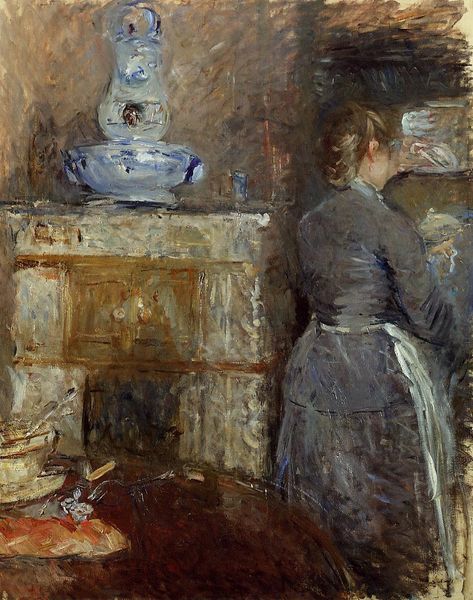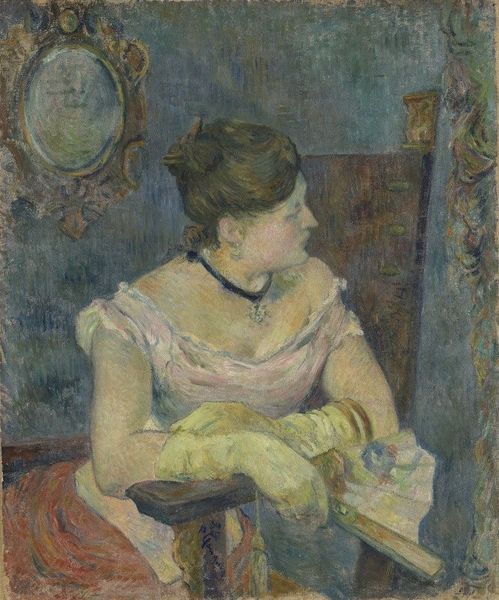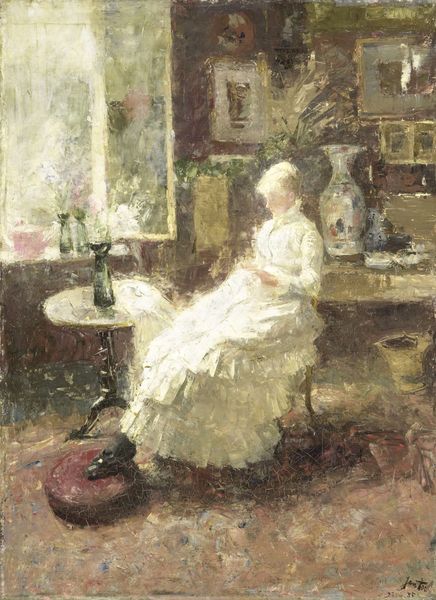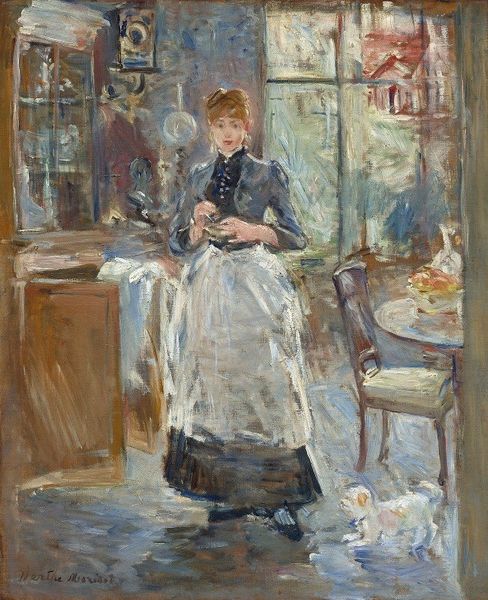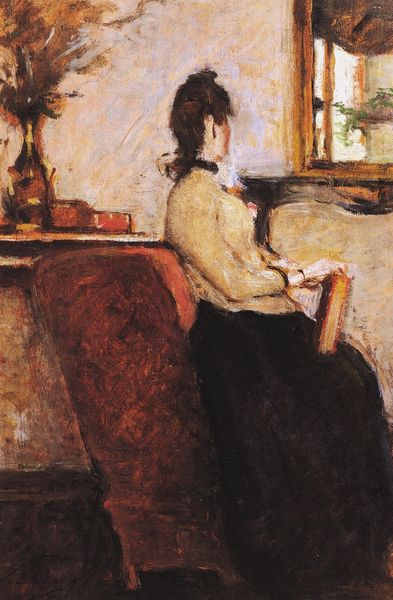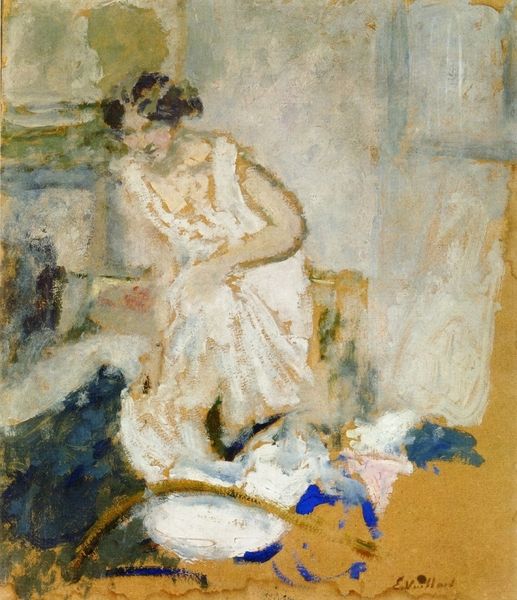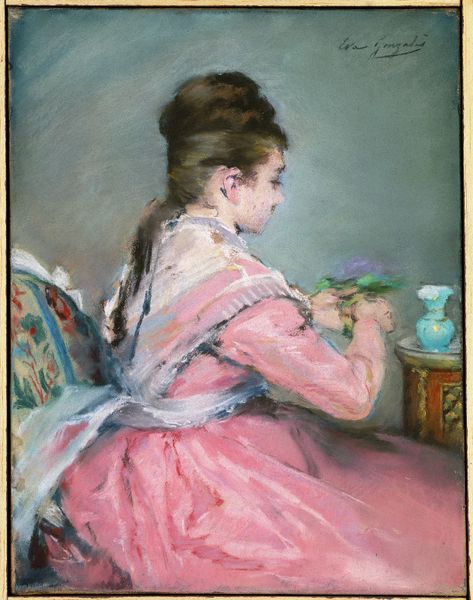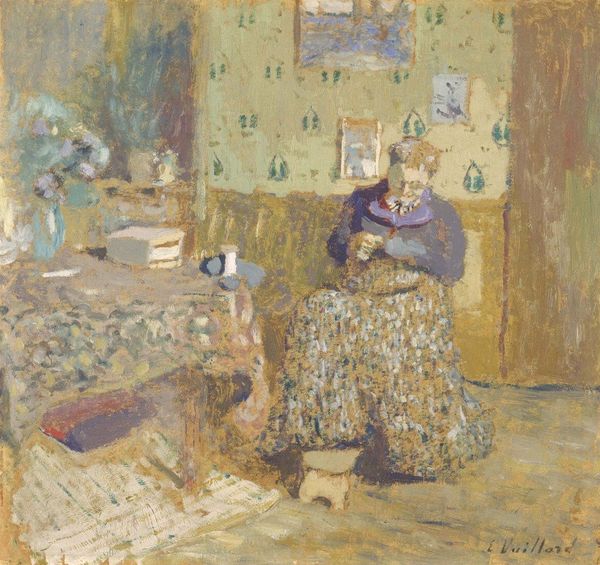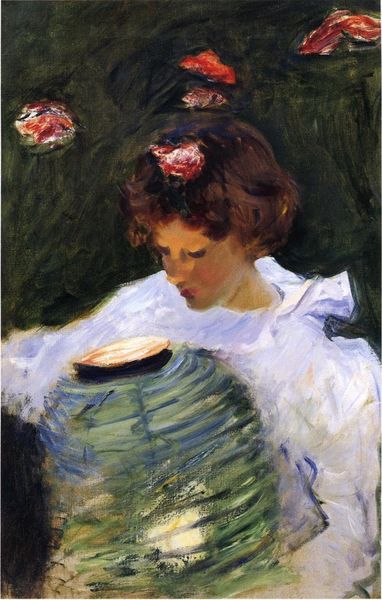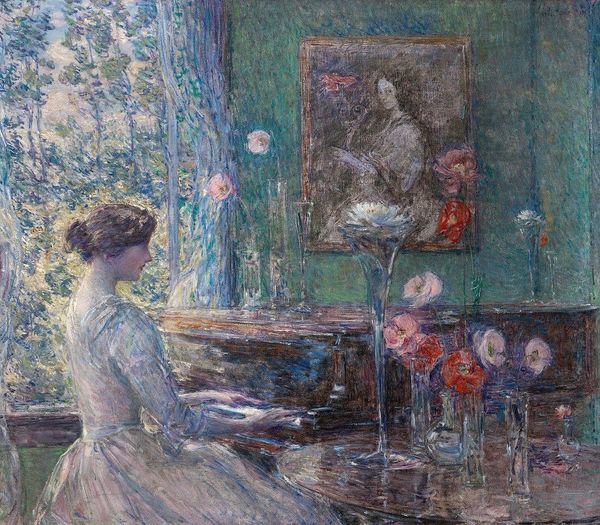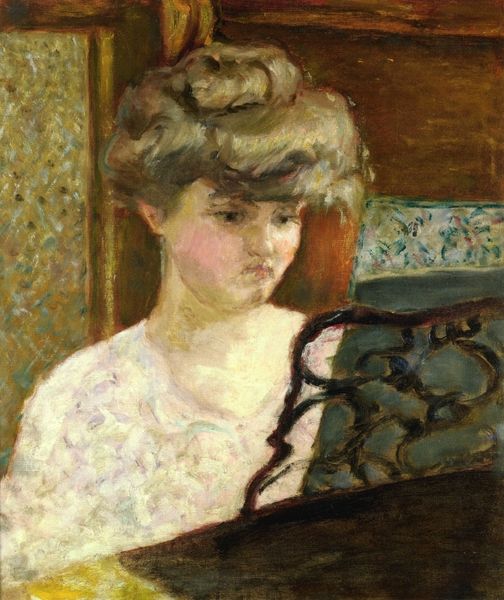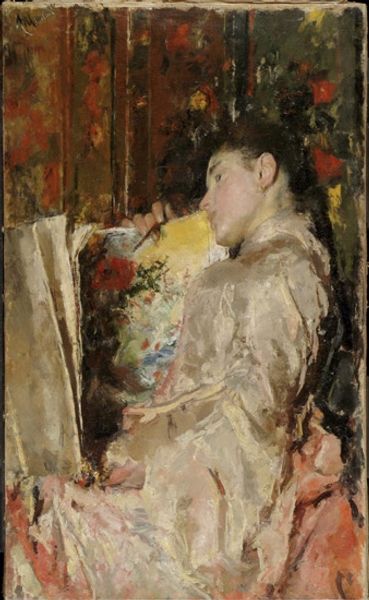
painting, oil-paint
#
portrait
#
figurative
#
painting
#
impressionism
#
oil-paint
#
oil painting
#
intimism
#
painterly
#
genre-painting
Copyright: Public Domain: Artvee
Curator: Up next we have "Femme cousant", or "Woman Sewing", an oil on canvas created around 1879 by Berthe Morisot. Editor: There’s a remarkable serenity to it. The woman is absorbed, her attention completely devoted to her sewing. And the palette, primarily greens, whites, and muted tones, adds to the feeling of quiet domesticity. Curator: Morisot's piece is significant. As one of the few women to professionally exhibit as an Impressionist, it exemplifies the constraints placed on female artists of that era, often confined to domestic and genre scenes. It reflects the realities of bourgeois women during that time, where needlework was seen as a respectable, refined activity. Editor: Precisely. Sewing itself is heavily laden with symbolism; it signifies mending, both literally and figuratively. Think of Penelope weaving and unweaving, endlessly postponing a choice. The lace and embroidery being worked on also evoke themes of creation and refinement, perhaps alluding to societal expectations placed on women to beautify their surroundings and themselves. Curator: Interestingly, Morisot often employed family members, in this case possibly her sister Edma, as models, embedding a personal narrative within her work. The focus wasn't just on skill; it was the artist engaging in everyday labor and portraying familiar intimacies. Editor: Look at the blurry shapes near her elbow—are those flower sprigs embroidered on the linen? This painting speaks about not just the "woman" but womanhood, in a subtle manner. Flowers, soft color harmonies—classic representations of femininity! Curator: Yet Morisot avoids sentimentality. Her loose, painterly brushstrokes challenge traditional academic techniques, rejecting a flawless appearance for a fresher depiction that mirrors modern sensibility. It reflects how Impressionism began questioning existing structures within the Salon system. Editor: Agreed! It does appear that the work subverts this conventional image through brushstroke choices. It’s as though she's highlighting both cultural traditions while simultaneously pulling at the threads. After examining “Femme cousant”, my ideas about symbols of creation through time are a lot to process now. Curator: Absolutely. Studying Morisot reveals volumes not only on artistic talent, but about the historical pressures surrounding gender and representation in 19th-century Paris.
Comments
No comments
Be the first to comment and join the conversation on the ultimate creative platform.
